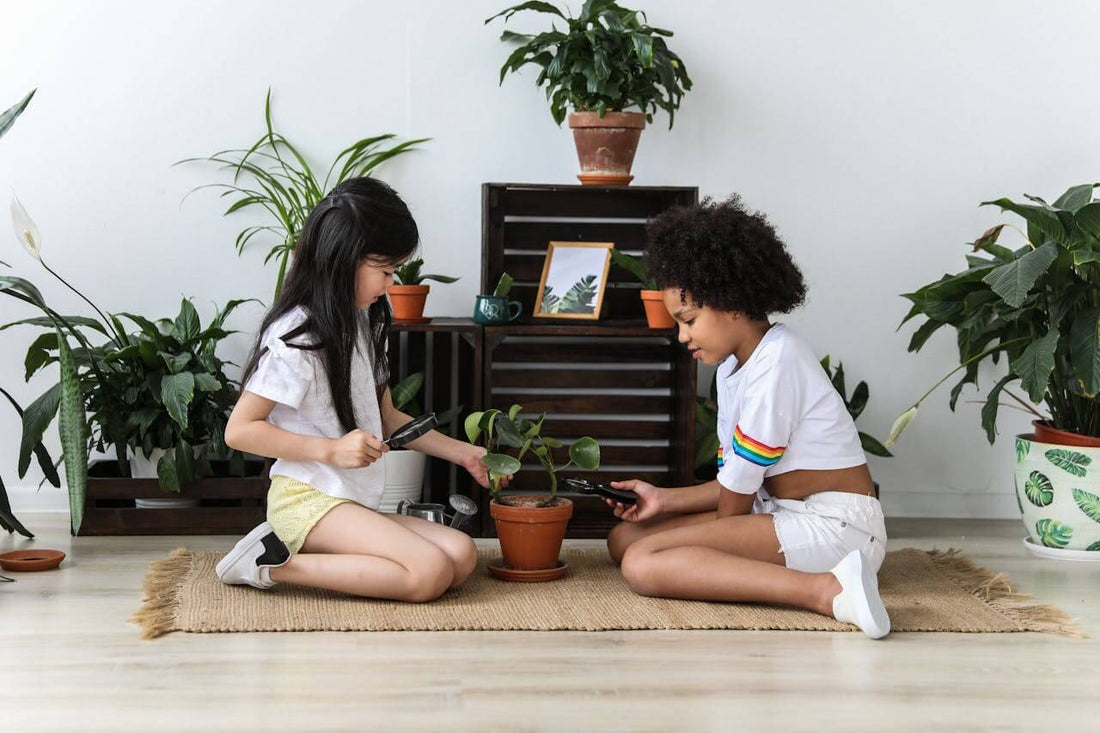
How to Maximize the Use of an Earthing Mat
Inie GeronimoIn today’s world, we are constantly surrounded by technology that emits electromagnetic fields (EMFs), which have led to concerns about their potential effects on our health. Many people seek ways to reduce their exposure to EMFs, improve their overall health, and reconnect with the natural energy of the Earth. One solution that has gained popularity in recent years is the use of an earthing mat, a simple yet effective tool designed to help you ground yourself and experience the benefits of direct physical contact with the Earth, even when you're indoors.
But how do you maximize the use of an earthing mat to enjoy its potential benefits fully? This blog post will explore what earthing is, how an earthing mat works, and practical tips to ensure you get the most out of your earthing experience.
What Is Earthing (Grounding)?
Earthing, also known as grounding, is the practice of physically connecting your body to the Earth’s natural electrical charge. This connection is thought to help restore balance to the body, reduce inflammation, improve sleep, and enhance overall health. When you walk barefoot on natural surfaces like grass, soil, or sand, your body absorbs electrons from the Earth that are believed to have a therapeutic effect.
However, in modern society, we are increasingly disconnected from the Earth. Concrete, asphalt, and synthetic materials often block this natural flow of energy. Earthing mats, which are designed to mimic this connection, allow you to reap the benefits of grounding while indoors or in environments where direct contact with the Earth is not possible.

How Does an Earthing Mat Work?
Earthing mats are made of conductive materials that are connected to the ground through a grounding cord. The grounding cord links the mat to a grounded outlet or a grounding rod that is placed outside. This allows the mat to receive the Earth’s electrons, which are then transferred to your body when you come into contact with the mat.
When you sit, lie, or stand on an earthing mat, your body absorbs the free electrons from the Earth, which may help neutralize free radicals, reduce inflammation, and promote a balanced electrical state in your body. The mat essentially serves as a conduit, transferring the Earth's electrical charge to you—much like walking barefoot on the ground.
Why Should You Use an Earthing Mat?
Before we dive into tips for maximizing the use of your earthing mat, let's first look at some of the benefits associated with regular use of earthing mats:
1. Reduced Inflammation
Research suggests that earthing may help reduce inflammation in the body by neutralizing free radicals. Free radicals are unstable molecules that can contribute to chronic conditions like arthritis and cardiovascular disease.
2. Better Sleep
Many people report improved sleep after incorporating earthing into their routine. Grounding has been linked to better regulation of cortisol (the stress hormone), helping to promote relaxation and better sleep patterns.
3. Improved Mood and Stress Reduction
By reducing inflammation and promoting a balanced electrical state, earthing can help calm the nervous system and improve mood. Some studies suggest grounding may have a positive impact on conditions like anxiety and depression.
4. Increased Energy Levels
People who practice grounding often report feeling more energetic throughout the day. The connection to the Earth’s energy is thought to help balance the body's natural rhythms, potentially boosting vitality.
5. Enhanced Circulation
Earthing may help improve blood circulation by promoting better flow and reducing viscosity (thickness) of the blood. This can have a positive effect on overall cardiovascular health.

Tips to Maximize the Use of Your Earthing Mat
To get the most out of your earthing mat, you need to be intentional about how and when you use it. Below are some practical tips and strategies to help you fully experience the benefits of grounding.
1. Use the Mat Regularly
Consistency is key when it comes to earthing. Just like any other wellness practice, you need to incorporate it into your daily routine for maximum benefits. Try to use the mat for at least 30 to 60 minutes each day, especially if you're hoping to improve sleep or reduce inflammation. If you find it difficult to carve out a specific time each day, start with shorter sessions and gradually increase the duration over time.
2. Choose the Right Location
The placement of your earthing mat matters. For optimal results, it’s best to use the mat in areas where you can be in a relaxed state, such as:
Bedroom: Many people use their earthing mats before bedtime to improve sleep quality. Place it next to your bed or under your feet while reading or relaxing.
Living Room or Office: You can place the mat under your desk if you spend long hours sitting, or on your couch if you prefer to relax while grounding yourself.
Yoga or Meditation Space: If you practice yoga or meditation, incorporating the earthing mat into these activities can enhance your grounding experience.
3. Keep the Mat Clean and Well-Maintained
Earthing mats are relatively low-maintenance, but it’s still important to keep them clean to ensure they function properly. Dirt, oils from your skin, and other contaminants can build up on the mat over time, reducing its effectiveness.
Cleaning: Wipe down the mat with a damp cloth regularly, using a mild soap if necessary. Avoid harsh chemicals or abrasive materials, as these can damage the mat’s conductive surface.
Inspecting the Cord and Connection: Check the grounding cord for wear and tear. If it becomes damaged or frayed, it may affect the mat’s ability to transfer energy from the Earth to your body.
4. Position Your Body Correctly
When using the earthing mat, it’s essential to ensure that your body makes good contact with the mat’s surface. Whether you’re sitting, lying down, or standing, make sure you have sufficient contact with the mat for the grounding to be effective.
Bare Skin: For maximum benefit, try to keep the areas of your body in contact with the mat bare (for example, barefoot, or with a bare hand or foot). Clothing, especially synthetic fabrics, can block the transfer of energy, so limit coverage as much as possible.
Posture: If you’re using the mat while sitting or lying down, be mindful of your posture. Ensure that you’re comfortable and relaxed so that your body can absorb the Earth’s energy effectively.
5. Combine Earthing with Other Wellness Practices
To enhance the benefits of grounding, consider combining the use of the earthing mat with other practices that support your health and well-being:
Hydration: Staying hydrated helps your body conduct electrical energy more effectively. Drink plenty of water throughout the day to support your grounding experience.
Mindfulness or Meditation: Grounding yourself can be a deeply calming experience. Consider using your earthing mat while practicing mindfulness or meditation to deepen your connection with your body and the Earth.
Exercise: Grounding after physical activity can help reduce muscle soreness and inflammation. Using the earthing mat post-workout may accelerate recovery.
6. Use the Mat with an Earthing System
Some earthing mats come with additional accessories, such as grounding sheets, pillowcases, or body bands. Using these items in conjunction with your earthing mat can provide a more comprehensive grounding experience.
For example, if you want to target specific areas of your body, you might consider using a grounding band or patch on your wrist or ankle while sitting or lying on the earthing mat. This can help concentrate the flow of electrons to specific parts of the body that may need healing.
7. Consider Your Electrical Setup
The effectiveness of your earthing mat depends on the grounding of your electrical system. Ensure that the outlet you are using to connect your mat is grounded properly. In some cases, you may need a grounding rod if your home’s electrical system is not grounded, or if you want to use the mat outside.
Testing the Grounding: You can use an outlet tester to check whether your home’s electrical outlets are properly grounded.
Using an External Grounding Rod: For those who live in areas where the electrical system isn’t well-grounded or want to take extra precautions, using a grounding rod in the soil outside the home is an option. Simply connect the earthing mat to the grounding rod using the provided cord.
8. Listen to Your Body
Lastly, always listen to your body. Some people may experience noticeable effects right away, while others may need time to notice a difference. Pay attention to how your body responds to earthing and adjust the duration and frequency of use as needed.
If you experience any discomfort or adverse reactions, such as headaches or dizziness, reduce the time you spend on the mat and consult with a healthcare provider if necessary.
Conclusion
Maximizing the use of your earthing mat is all about consistency, proper placement, and mindfulness. By incorporating grounding into your daily routine, maintaining your mat, and combining it with other wellness practices, you can experience the full range of benefits that earthing has to offer. Whether you’re looking to improve sleep, reduce inflammation, or simply reconnect with the natural energy of the Earth, an earthing mat can be a valuable tool in your wellness toolkit.
As research on earthing continues to grow, it’s exciting to see more people adopting this simple yet powerful practice. By following these tips and being consistent in your use, you can maximize the potential of your earthing mat and enjoy its many health benefits for years to come.










